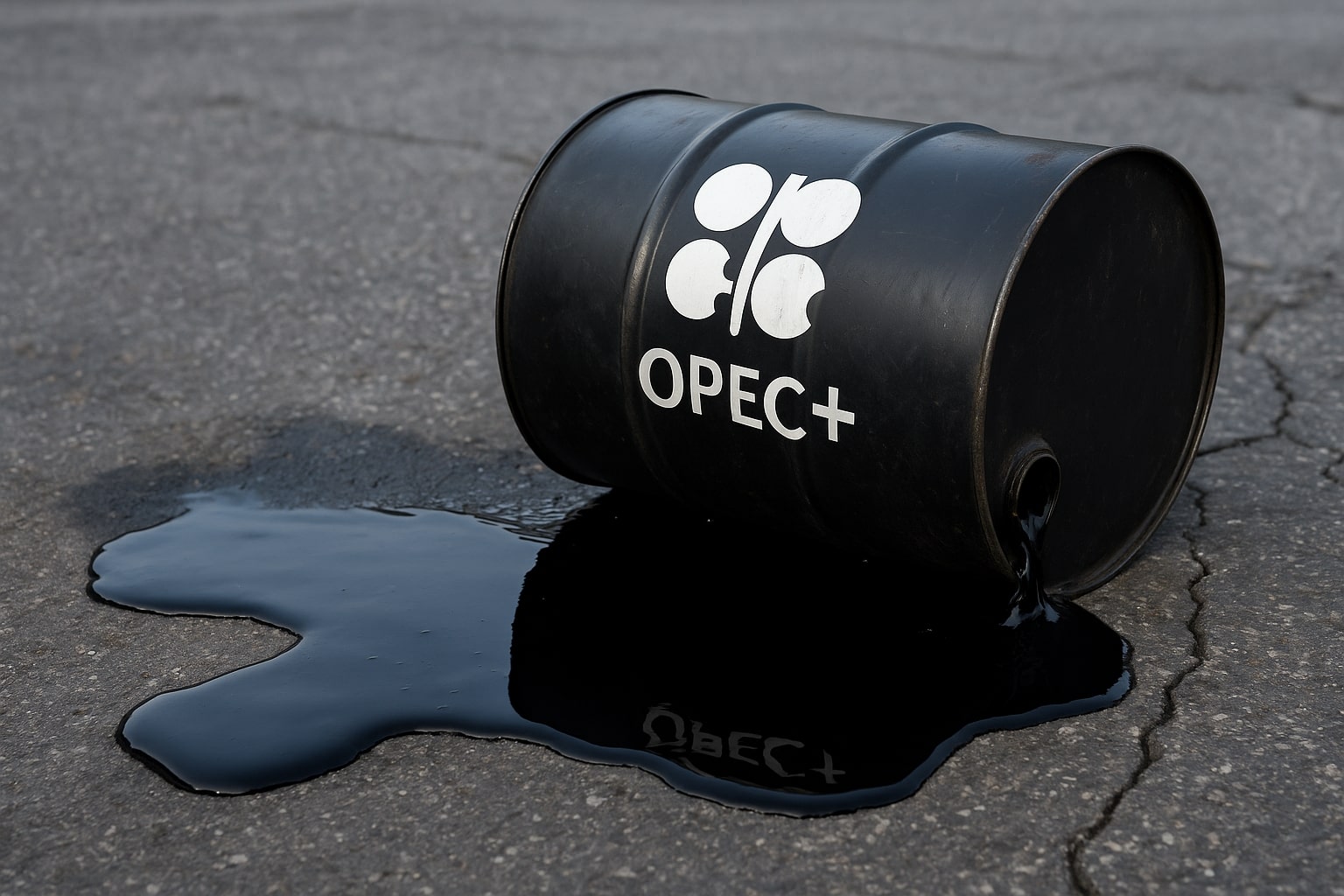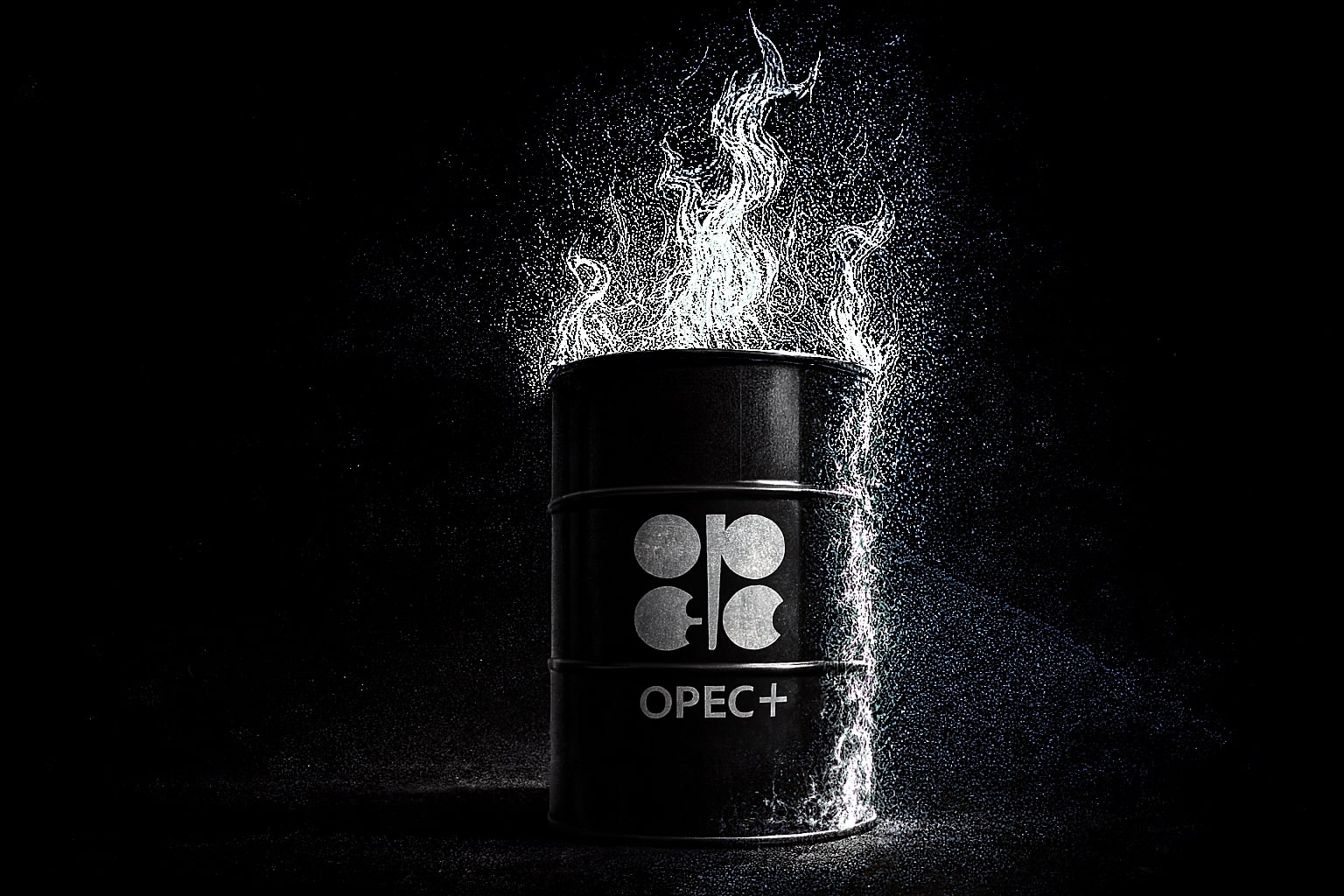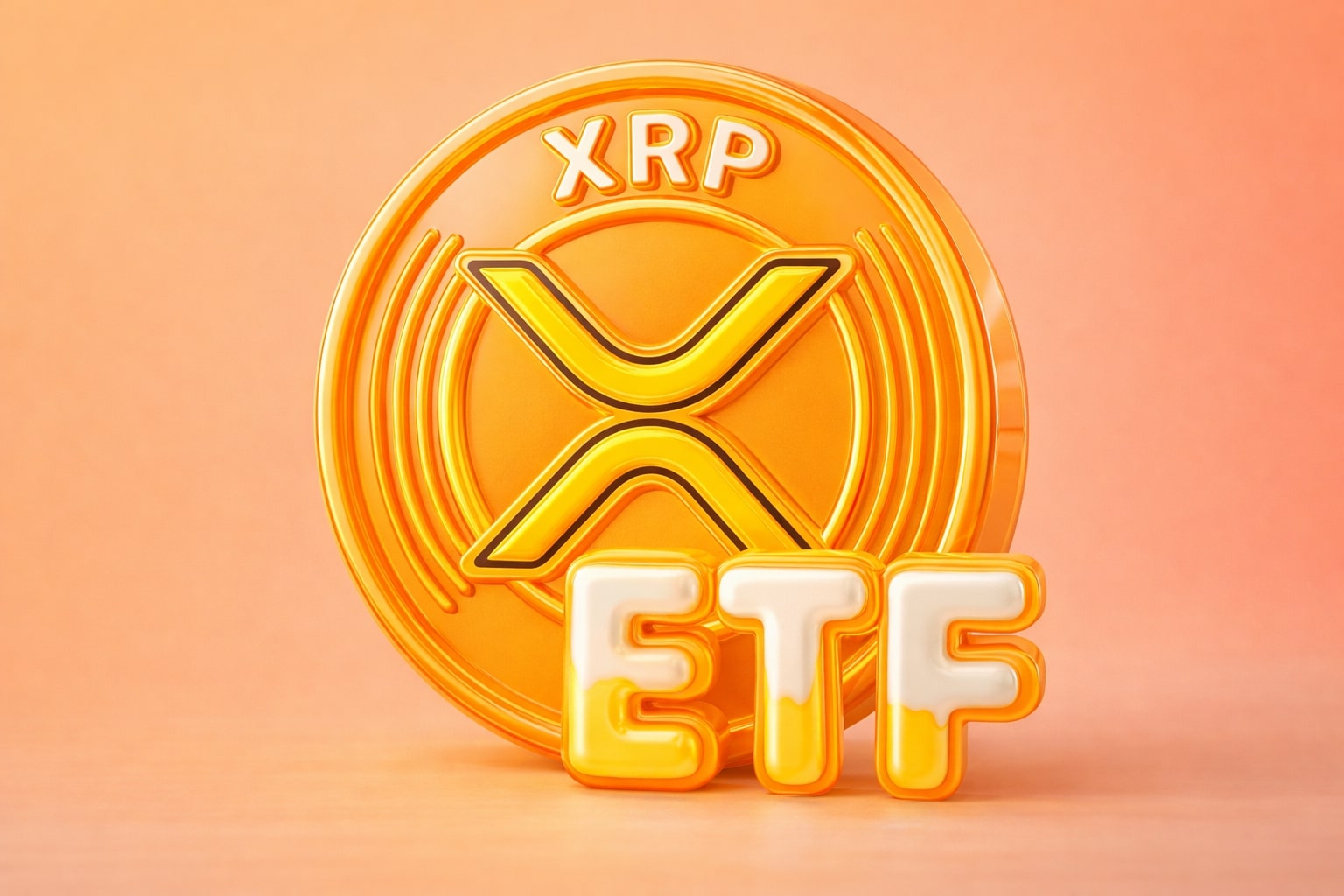
WTI and Brent Plunge to Multi-Month Lows: Is Oil Entering a Bear Phase?
Trade War, Refinery Closures, and Supply Shock Push Oil Prices Below Key Support Levels | That's TradingNEWS
Oil Prices Sink Below Key Levels as Trade War, Output Growth, and Sanctions Collide
CL=F, BZ=F Fall Amid Supply Overhang and Geopolitical Drag
Crude oil prices have sharply pulled back as a perfect storm brews over the global energy market. WTI crude (CL=F) has slumped to $65.99, a drop of 1.80%, while Brent crude (BZ=F) follows closely at $68.25, down 1.39%. Despite a weakened U.S. dollar offering slight relief to importers in foreign currencies, that minor tailwind has been overwhelmed by deteriorating macro conditions, surging supply, refinery disruptions, and intensifying geopolitical fault lines.
Tariff Tensions Between U.S. and EU Strip Away Demand Optimism
The looming August 1st U.S. tariff deadline, threatening a 30% levy on EU imports, has jolted fuel demand forecasts. European retaliation is expected to be broad and immediate, with diplomatic sources confirming the EU is drafting countermeasures. The result: investors are aggressively repricing crude demand expectations downward, especially as the trade war narrative escalates from rhetoric to policy. Market sentiment has been deflated, with Brent futures falling 52 cents intraday and WTI down 51 cents, a direct reflection of collapsing bullish conviction.
This tension comes amid already fragile consumption patterns in Europe and Asia, where tepid manufacturing data and sluggish gasoline sales in summer months have failed to offer any buffer. U.S. gasoline futures dropped to $2.099, shaving off 1.55%, on the back of import surges and cooling seasonal demand. These refined product signals point to cracks across the energy chain—not just upstream pricing.
OPEC+ Output Growth and Saudi Export Jump Slam Market Balance
Even as demand outlook dims, supply is accelerating. OPEC+ members have started to unwind previous production cuts, with output returning faster than markets anticipated. Saudi Arabia’s May crude exports rose to a 3-month high, intensifying the bearish tilt. According to JODI data, Saudi flows are climbing at a time when macro signals are pointing in the opposite direction—triggering concerns of a renewed supply glut.
The OPEC basket price now sits at $70.65, marginally down 0.45%, but the broader structural risk is growing. Mars US crude has tumbled to $71.88, losing 1.41%, while Bonny Light has plunged 2.84% to $78.62—marking the steepest declines in premium blends tied to light sweet production. These are not short-term dislocations—they reflect rebalancing pressures as buyers hesitate and producers continue pumping.
CNOOC Adds Pressure with Bohai Heavy Crude Expansion
China is not staying on the sidelines. CNOOC just activated its Kenli 10-2 oilfield project in the southern Bohai Sea, launching a 79-well program targeting 19,400 boepd by 2026. The project holds 100 million tons of proved reserves—about 730 million barrels—and is expected to be fully operational in phases. This single asset brings another wave of heavy crude into a market already bracing for excess.
This development follows six consecutive years of record production from CNOOC, which remains on track to maintain elevated output through 2027. While global upstream capital expenditure remains cautious elsewhere, China's production narrative bucks the trend, particularly in state-owned expansions. The timing couldn’t be worse for price stability.
India’s Refiners Hit by EU Sanctions, but Trade Flows to Shift East
In parallel, India's refining flow has entered volatility mode after being caught in the EU’s 18th round of sanctions. With restrictions targeting fuel made from Russian crude, Indian exporters like Reliance Industries and Nayara Energy—the latter backed by Rosneft—now face a six-month clock before EU outlets shut. Reliance has been pushing over 2.8 million barrels of diesel and 1.5 million barrels of jet fuel into Europe monthly—flows that will now be forced to reroute.
Sanction consequences are reverberating across Indian trade desks. Traders are looking toward West African floating storage and Asian intermediaries to absorb the fuel wave, likely with higher cost structures. That shift could elevate freight premiums, dent margins, and inject dislocation into global diesel benchmarks, particularly in the Mediterranean and Singapore markets.
Indonesia-U.S. Trade Deal Shakes Refining Supply Map
A separate but equally impactful development comes from Southeast Asia. Indonesia has secured a $10 billion American oil and LPG import deal, slashing its dependence on Singapore as a refining partner. The trade agreement, which lowered U.S. tariffs on Indonesian goods from 32% to 19%, will unlock new energy flows from the U.S. Gulf to Jakarta.
This bilateral pivot is complemented by Indonesia’s $8 billion modular refinery agreement with KBR Inc., which will lead to the construction of 17 refineries across the archipelago. That domestic capacity expansion will shift regional product flows and could reduce spot demand from China or South Korea. Moreover, Indonesia's sovereign wealth fund is backing the buildout, ensuring this is not just political theater but a foundational change in refining self-sufficiency for Southeast Asia’s largest economy.
British Refinery Insolvency and Capacity Fallout Adds Fuel to Fire
Europe’s refining challenges aren’t limited to sanctions. Britain’s Lindsey refinery, with a throughput capacity of 113,000 barrels per day, is now heading toward shutdown after no buyer stepped in following its insolvency. The Prax Group, its operator, failed to maintain viability amid collapsing margins, tightening environmental policies, and insufficient government support. This reduces the UK’s total number of refineries to four and places further strain on domestic supply chains.
Ironically, the same UK government is now evaluating whether to extend support under its Energy-Intensive Industries Compensation Scheme, a pivot that underscores the policy schizophrenia between decarbonization goals and industrial infrastructure reality.
Teapot Refineries in China Restart, Threatening Product Oversupply
Adding more complexity, independent refineries in China’s Shandong province—nicknamed “teapots”—are being revived after bankruptcies in 2024. Shandong Changyi Petrochemical is already back online under new ownership, with two more facilities—Zhenghe Group and Huaxing Petrochemical—in advanced talks for reactivation.
These restarts will inject more refined product into a region already struggling with narrow crack spreads and limited export windows. Unless demand recovers sharply in Q3, this return of Chinese refining could generate a product surplus, particularly in diesel and naphtha, adding to the headwinds facing global complex refiners.
CL=F and BZ=F Technicals Suggest Further Breakdown Risk
Technically, both WTI (CL=F) and Brent (BZ=F) are trapped in a breakdown structure. CL=F has dropped well below its 50-day moving average at $68.10, with the 200-day average sitting far above at $72.85. BZ=F failed to hold support at $69.50, and the next support base is seen around $64.20. RSI levels are not yet oversold, suggesting further downside room. Momentum indicators are rolling over, confirming bearish trend continuation.
Futures traders are echoing this shift. Volumes have spiked in put options below $65 strike for CL=F, while open interest in Brent’s September contract shows rotation out of long positions. Derivative market structure implies growing conviction in sub-$65 pricing scenarios if macro and trade signals worsen.
Verdict: Bearish | Oil Prices Face Prolonged Pressure | Sell Rally Spikes
Current oil price action reflects a structural deterioration in both demand and sentiment. Rising supply, weakening global trade relations, refinery disruptions, and shifting import strategies across Asia all feed into a bearish thesis. Until Brent (BZ=F) reclaims $71.00 and WTI (CL=F) stabilizes above $68.50, the setup favors downside continuation. Any price spikes from geopolitics or temporary disruptions should be seen as sell opportunities, not long setups. Based on all the facts and figures, oil remains a Sell in the short to mid-term.
That's TradingNEWS
Read More
-
SMH ETF: NASDAQ:SMH Hovering at $350 With AI, NVDA and CHIPS Act Fueling the Next Move
16.12.2025 · TradingNEWS ArchiveStocks
-
XRP ETFs XRPI and XRPR: Can $1B Inflows Lift XRP-USD From $1.93 Back Toward $3.66?
16.12.2025 · TradingNEWS ArchiveCrypto
-
Natural Gas Price Forecast: NG=F Falls to $3.80–$3.94 as Warm Winter Kills $5.50 Spike
16.12.2025 · TradingNEWS ArchiveCommodities
-
USD/JPY Price Forecast - USDJPY=X Slides, BoJ 0.50% Hike, Fed Cut and NFP Set the Next Big Move
16.12.2025 · TradingNEWS ArchiveForex



















